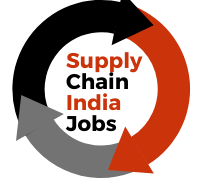
Sustainability in Procurement: How to Create a Holistic and Scalable Approach that Drives Long-Term Success
Sustainable procurement has become an increasingly important consideration for businesses around the world. With heightened awareness of environmental and social issues, organizations are recognizing the need to integrate sustainability into their procurement practices to mitigate risk, reduce costs, and meet stakeholder expectations. However, creating a sustainable procurement strategy that is both holistic and scalable can be a daunting task.
In this article, we will explore the key principles of sustainable procurement, provide guidance on creating a sustainable procurement strategy, discuss scaling up sustainable procurement, and highlight the importance of measuring and communicating sustainable procurement performance.
Key Principles of Sustainable Procurement
Sustainable procurement is based on several key principles that help organizations incorporate environmental, social, and ethical considerations into their procurement processes. These principles include:
- Environmentally responsible procurement:
This principle involves considering the environmental impact of products and services throughout their entire lifecycle, from sourcing raw materials to disposal. It also involves promoting sustainable practices, such as reducing waste, minimizing carbon emissions, and conserving natural resources.
- Socially responsible procurement:
This principle involves promoting ethical labour practices and human rights throughout the supply chain. This includes fair labour practices, safe working conditions, and the elimination of child labour and forced labour.
- Ethical procurement:
This principle involves conducting business with integrity and in compliance with ethical standards and regulations. It includes avoiding conflicts of interest, maintaining confidentiality, and promoting fair competition.
- Economic sustainability in procurement:
This principle involves making cost-effective purchasing decisions that consider the long-term economic impact of products and services. This includes promoting local sourcing, supporting small and diverse businesses, and investing in sustainable innovation.
Implementing these key principles requires collaboration and engagement with suppliers, stakeholders, and industry experts. Organizations can leverage tools such as sustainability scorecards, supplier audits, and supplier codes of conduct to ensure that suppliers are meeting these sustainable procurement principles. By prioritizing sustainable procurement, organizations can drive positive social and environmental impact, reduce risk, and create long-term value for their stakeholders.
Creating a Sustainable Procurement Strategy
Creating a sustainable procurement strategy requires a systematic and collaborative approach that considers the organization’s unique context, stakeholders, and objectives. Here are the key steps in developing a sustainable procurement strategy:
- Assessing current procurement practices:
This step involves conducting a comprehensive assessment of current procurement practices to identify areas for improvement and opportunities to integrate sustainable practices. It also involves analyzing the organization’s supply chain to identify potential risks and opportunities for sustainability.
- Setting sustainability goals and objectives:
This step involves setting clear and measurable sustainability goals and objectives that align with the organization’s overall sustainability strategy. This includes identifying key performance indicators (KPIs) to measure progress towards these goals.
- Identifying and engaging stakeholders:
This step involves identifying key stakeholders, including suppliers, customers, employees, and community members, and engaging with them to understand their sustainability concerns and priorities. This includes developing communication plans to keep stakeholders informed and engaged throughout the sustainability planning process.
- Developing a sustainability plan:
This step involves developing a comprehensive sustainability plan that outlines specific actions to achieve sustainability goals and objectives. The plan should include details on how to integrate sustainable practices into procurement processes, such as supplier selection, contract management, and supplier performance evaluation.
- Implementing and monitoring the plan:
This step involves implementing the sustainability plan, including integrating sustainable practices into procurement processes and engaging with suppliers to promote sustainability. It also involves monitoring progress towards sustainability goals and objectives, tracking KPIs, and making adjustments to the plan as necessary.
By following these key steps, organizations can create a sustainable procurement strategy that promotes positive social and environmental impact, reduces risk, and creates long-term value for stakeholders.
Scaling Up Sustainable Procurement
Scaling up sustainable procurement requires a more holistic and collaborative approach that considers the entire supply chain, engages with suppliers, and leverages emerging technologies. Here are the key steps in scaling up sustainable procurement:
- Creating a scalable procurement framework:
This step involves developing a framework that enables the organization to scale up sustainable procurement practices across all procurement functions. The framework should include guidelines, tools, and resources to help procurement professionals integrate sustainable practices into their work.
- Building supplier partnerships:
This step involves engaging with suppliers to build partnerships that promote sustainable practices, such as sharing best practices, providing training and education, and incentivizing sustainable performance.
- Promoting sustainable procurement across the supply chain:
This step involves promoting sustainable procurement across the entire supply chain, such as through supplier codes of conduct, sustainability scorecards, and supplier audits.
- Engaging with industry peers and experts:
Engaging with industry peers and experts is critical to staying up to date on emerging sustainability trends and best practices. This involves participating in industry associations and events, sharing knowledge and experiences with peers, and learning from experts in the field.
- Incorporating emerging technologies:
This step involves leveraging emerging technologies, such as blockchain, artificial intelligence, and the internet of things, to increase supply chain transparency, improve efficiency, and reduce environmental impact.
By following these key steps, organizations can scale up their sustainable procurement practices, drive positive social and environmental impact, reduce risk, and create long-term value for their stakeholders.
Measuring and Communicating Sustainable Procurement Performance
Measuring and communicating sustainable procurement performance is essential to demonstrate the business value of sustainable procurement and to promote continuous improvement. Here are the key steps in measuring and communicating sustainable procurement performance:
- Measuring sustainable procurement performance:
Measuring sustainable procurement performance involves tracking key performance indicators (KPIs) to assess progress towards sustainability goals and objectives. KPIs may include metrics related to carbon emissions, waste reduction, supplier diversity, and labor standards. It is important to establish a baseline for KPIs, set targets for improvement, and regularly track and report on progress.
- Communicating the benefits of sustainable procurement:
This step involves communicating the benefits of sustainable procurement to internal and external stakeholders, such as improved brand reputation, reduced risk, and cost savings. This also includes highlighting the positive social and environmental impact of sustainable procurement practices, such as reducing carbon emissions, promoting fair labor practices, and supporting local communities.
- Transparency and reporting:
This step involves being transparent about sustainable procurement practices and performance, such as through sustainability reports, supplier sustainability scorecards, and stakeholder engagement. It also involves being transparent about the organization’s sustainability practices, such as supplier selection criteria, supplier codes of conduct, and sustainability certifications.
By measuring and communicating sustainable procurement performance, organizations can demonstrate their commitment to sustainability and engage stakeholders in sustainability initiatives. This can help build a positive reputation, attract and retain customers, and create long-term value for the organization and its stakeholders.
Creating a holistic and scalable approach to sustainable procurement requires a concerted effort from organizations, suppliers, and industry experts. By integrating sustainability considerations across the entire supply chain, building supplier partnerships, leveraging emerging technologies, and measuring and communicating sustainable procurement performance, organizations can drive long-term success and create a more sustainable future. It is time for organizations to prioritize sustainable procurement and to take action towards creating a more sustainable world.
FAQs:
Q: Why is sustainable procurement important?
A: Sustainable procurement is important because it can help organizations reduce their environmental impact, promote social responsibility, and build long-term value for their stakeholders. It can also reduce risk, enhance reputation, and support regulatory compliance.
Q: What are the key principles of sustainable procurement?
A; The key principles of sustainable procurement include environmentally responsible procurement, socially responsible procurement, ethical procurement, and economic sustainability in procurement.
Q: How can organizations create a sustainable procurement strategy?
A: Organizations can create a sustainable procurement strategy by assessing current procurement practices, setting sustainability goals and objectives, identifying and engaging stakeholders, developing a sustainability plan, and implementing and monitoring the plan.
Q: How can organizations scale up sustainable procurement?
A: Organizations can scale up sustainable procurement by creating a scalable procurement framework, building supplier partnerships, promoting sustainable procurement across the supply chain, engaging with industry peers and experts, and incorporating emerging technologies.
Q: How can organizations measure and communicate sustainable procurement performance?
A: Organizations can measure sustainable procurement performance by tracking key performance indicators (KPIs) related to environmental impact, social responsibility, and economic sustainability. They can communicate the benefits of sustainable procurement by highlighting the positive impact of sustainability initiatives and being transparent about their sustainability practices. They can also promote transparency and reporting by regularly reporting on sustainability performance and progress towards goals.
Author Bio:
Marijn Overvest is the founder of Procurement Tactics, a company that provides procurement solutions to businesses. He has over 20 years of experience in procurement & negotiations: including 10+ years within the commercial department of a large global retailer and over five years in online start-ups & business funding.
He has negotiated deals up to 500 million euros and has dealt with 1500 different products delivered by 70 suppliers every year. Additionally, he created over 300+ negotiation plans, being a sparring partner for procurement managers in their process of creating negotiation plans.
